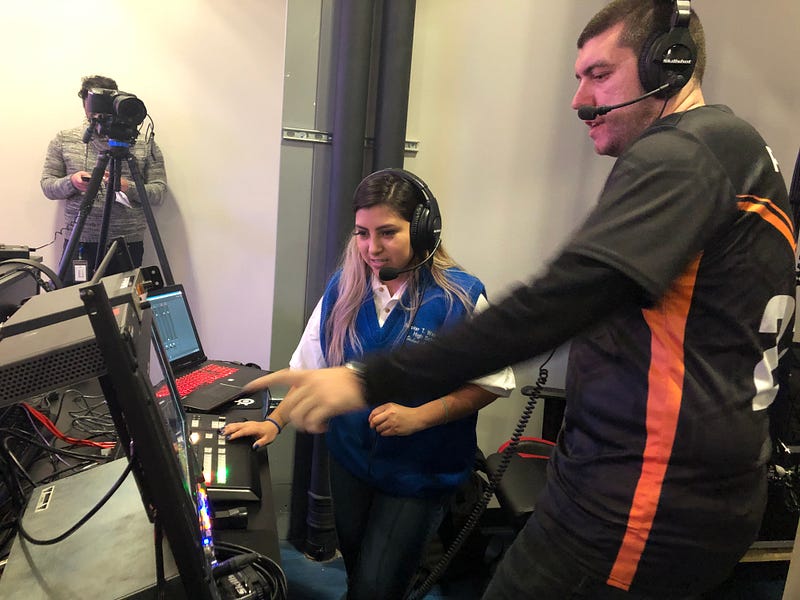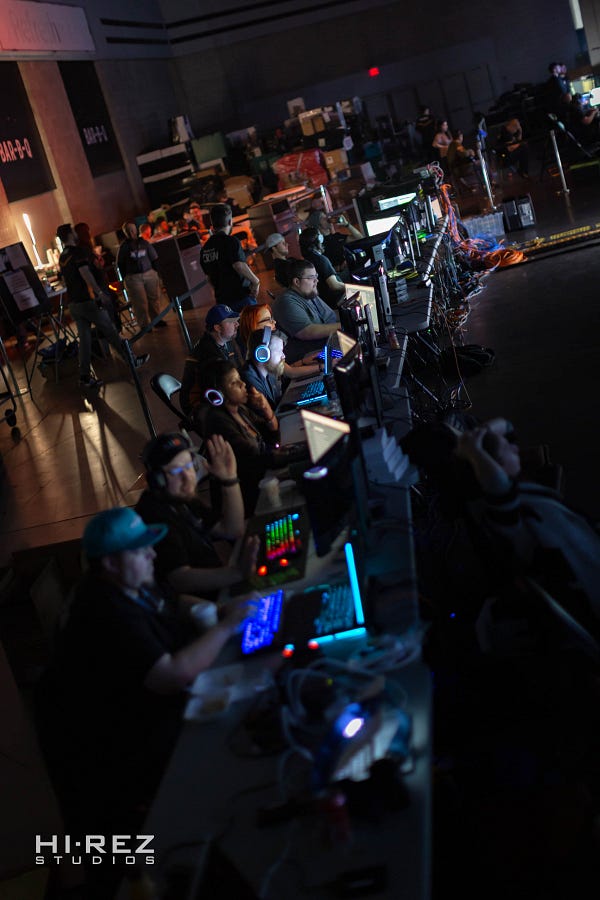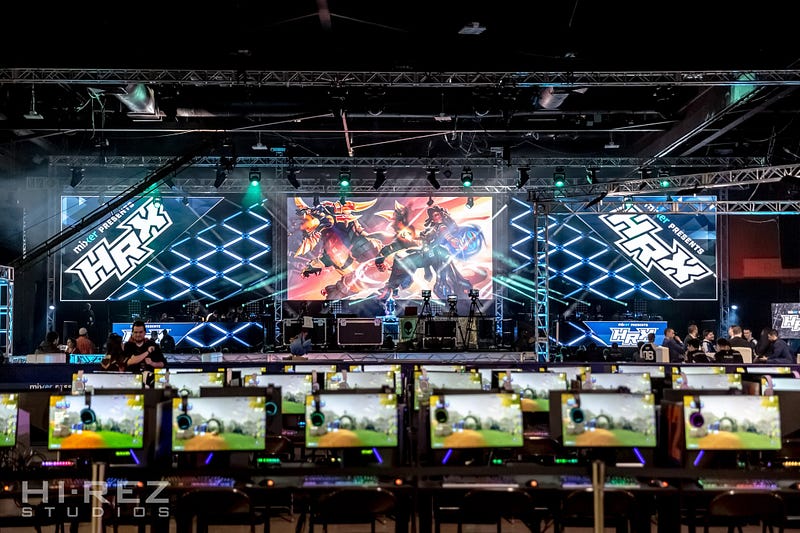Like many parents, you may be wondering if your child’s passion for gaming is time that should be spent on academics. Fear not, the ever-burgeoning world of gaming –with 2.2 billion gamers in the world (that’s more than 25 percent of the entire global population) and $108 billion in video games sales in 2017 — is on a fast track to produce lucrative workforce opportunities to further this growth trend for years to come. So, game on and encourage your young gamer to dream about a future career in gaming!
Careers in Gaming From A to Z

A is for ANIMATORS & ARTISTS: Video game artists make the game come alive with visual images produced with specialized software. A dozen or more artists can be responsible for the creation of a single character. Artists also create the environment of the game and the game packaging.
B is for BUSINESS JOBS IN THE VIDEO GAME INDUSTRY: Responsible for the business and financial viability within a company, these producers ensure funding exists to support development and marketing, alongside managing personnel and keeping product launches on time and within budget.
C is for COMPUTER PROGRAMMERS: Computer programmers create the code that makes the magic within a game happen. They make sure characters are playable and controllable. They create the artificial intelligence that makes interacting with non-payable characters realistic. They also test the game to look for errors and then rewrite it until it is error-free. The programmer continues to make updates and adjustments as needed.
D is for GAME DESIGNERS: These designers birth the concepts that become video games. They turn ideas into storylines — complete with descriptions of the environment and the overall purpose of the game, develop characters, and then remain an integral part of the production team. Along the way, they collaborate with artists, programmers, and audio engineers.
E is for AUDIO ENGINEERS: Engineers use a variety of technology to create the soundtracks for games, from character’s voices to sound effects and background music.

F is for FUN: For lifelong gaming enthusiasts, growing up and gaining employment in the gaming industry is fun. Interested in a career like this? Many gaming companies offer school and youth group tours.
G is for GAME PRODUCER: Like a movie producer, game producers are focused on seeking investments for a project, keeping schedules on-time, and budgets within limits. They do a lot of pitching within the industry to power players and, most importantly, stay connected with fans.
H is for HUMOR: Finding humor in a tough situation is a great quality for an employee in the gaming industry. An appropriate sense of humor is welcome when faced with a glitch, imminent deadlines, trying to fix a tough bug, or answering the same customer questions over and over again.
I is for INTERPRETERS and TRANSLATORS: While you may think of your favorite game in your own language, the worldwide popularity of video games means they need to be translated into many languages for an international market. Interpreters convert character dialogue into other languages; while translators change instructions and other documentation from their original format to other languages. And yes, humans still do a better job of interpreting and translating than computers.
J is for JEALOUS: Your peers who work in boring office jobs will no doubt be jealous of your career path and the fun you get have working in the gaming industry for a living.
K is for KNOWLEDGE: The knowledge you will gain from working within the gaming industry will create a solid career path for you. The gaming industry is booming with seemingly unstoppable revenue growth. If you have (and continually nurture) the right skill set, you will be presented with lots of professional opportunities in the gaming industry.
L is for LIVE PRODUCTION ROLES: Multiplayer games have given birth to the rise of esports, where gamers are likened to athletes and their competitions to more traditional sporting events. Competitions can happen remotely, with players spread across the globe, but they also happen in video game studios and in arena settings. There is a whole cast of professional roles to choose from, from on-air talent like a sportscaster to behind the scene video, audio and lighting roles.

M is for MARKETING MANAGERS: From the launch of the game to updates, marketing efforts are key to maintaining the popularity of a game among fans. Marketing managers create plans for how to sell where to sell and how to promote a game.
N is for NO GAMER LEFT BEHIND: Just like in team-based games, where you collaborate with, support, and look out for your fellow coworkers, being part of a gaming design team requires you to be a team player and bring your best to work every day.
O is for OTHERS: Fans of multiplayer online games know they can’t win the game alone. It requires a team of ‘others’ to communicate and collaborate on a winning strategy. Similarly, the creation and maintenance of a popular video game requires the dedication and talent of entire teams of gaming professionals. Knowing how to work well with others is key to a successful career in the gaming industry.
P is for VIDEO GAME PUBLISHERS: Just like publishing companies exist to publish books, video game publishing companies publish new video games. Publishers are responsible for manufacturing, and marketing, including market research and advertising.
Q is for QUALITY ASSURANCE: While some employees are uniquely focused on testing, testing, and testing even more to assure that a game works as it should, a commitment to quality is a primary goal of everyone involved with a video game. Fans will move on to another game if they get frustrated with lag or bugs. So if you go to work for a video game company, you need to have the mindset of being detailed oriented and accountable to product success.
R is for RESEARCH ANALYST: The gaming industry is always looking to predict the next trend and produce it before a competitor does. Market research analysts survey customer buying preferences and use that data to help publishers decide what products and services to sell, how much to charge and where, and how to sell these products and services.
S is for SOFTWARE DEVELOPERS: Software developers take the visions created by the artists and translate it into a working game. Software developers design the gaming software and ensure that it works as the artists intend it to.

T is for TECHNICAL SUPPORT SPECIALISTS: Have you ever had a problem within a game and needed help? If you called a help line, then you spoke to a technical support specialist who is there to help customers who have problems operating games via phone, online chat, and email.
U is for UNANIMOUS: Everyone agrees that esports is not a phenomenon, it’s here to stay. There are more than 250 million viewers around the world, representing 10 percent of all sports viewing and counting. In fact, by 2021, in the United States, esports will have more viewers than every professional sports league but the NFL!
V is for VIDEO GAME TESTERS: These employees get paid to play the game to make sure it is functioning correctly and that instructions and documentation are easy to follow. Their job is to identify potential issues before customers do and report them to the designers and developers.
W is for WRITERS: Writers create the stories within a game and the scripts for each character. Writers also create all of the documentation and instructions for a game.
X is for XP: Just as you collect Experience Points (XP) to level-up in a game, all the experiences you create for yourself can help you level-up a potential career in gaming.
Y is for YOU: Think about how you game with others and what you share with them via voice and chat. What kind of player are you known as? How do you treat other gamers? If you want a career in gaming, your digital persona will be studied closely. Keep that in mind!
Z is for GENERATION Z: Born into the Digital Age, this generation has an innate comfort level with all aspects of technology. They have been surrounded by what their parents consider innovations since birth. They see the world from a lens of technology and have a great deal to contribute to the workforce thanks to this perspective.

